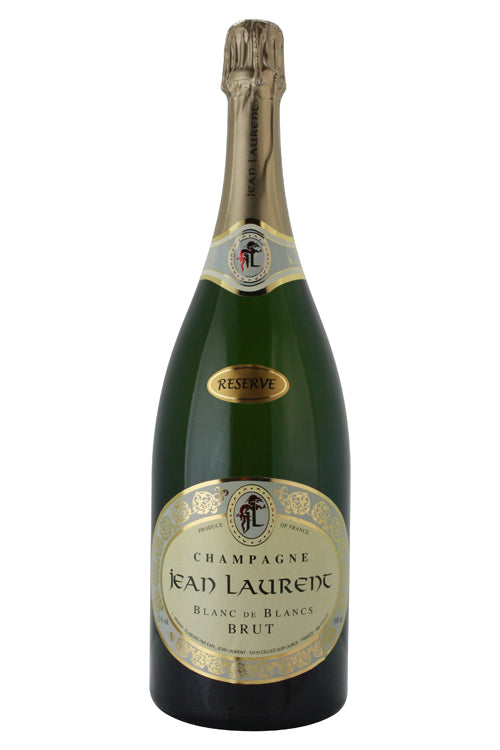1
/
of
1
Jean Laurent Blanc de Blancs MAG - NV (1.5L)
Jean Laurent Blanc de Blancs MAG - NV (1.5L)
Regular price
$129.99
Sale price
$129.99
Regular price
$149.99
Unit price
/
per
Light yellow-gold. Fresh citrus and orchard fruit aromas are complicated by hints of white flowers, honey and buttered toast and lifted by a minerally topnote. Juicy, expansive tangerine and quince flavors show a refreshingly bitter edge, picking up sweetness and weight with air. Finishes on a smoky mineral note, with strong drive, focus and cling.
Vinous - 91 points
Availability:
25 In Stock
$25 Shipping on Orders +$299
Couldn't load pickup availability
Share :

- varietal
- Region
- Type
- Reviews
Product Review
Light yellow-gold. Fresh citrus and orchard fruit aromas are complicated by hints of white flowers, honey and buttered toast and lifted by a minerally topnote. Juicy, expansive tangerine and quince flavors show a refreshingly bitter edge, picking up sweetness and weight with air. Finishes on a smoky mineral note, with strong drive, focus and cling.
Product Score
91
Its adaptability to different soils and climates, and malleability in the wine room make Chardonnay one of the most popular and ubiquitous grapes. Responsible for some of the world’s most thrilling white wines wines including Champagne, it is in its homeland of Burgundy with villages such as Chablis, Meursault and Puligny-Montrachet that producers craft arguably some of the world’s finest wines. Chardonnay is also synonymous with California, where it can display riper, tropical fruit flavors, rather than the more restrained stone fruit and steely, mineral qualities often associated with its Old World and cool climate counterparts. While there are terrific fresh and vibrant Chardonnays made solely using stainless steel, the grape also knits terrifically well with oak, lending greater depth and weight in the form of a nutty, toasty and somtimes buttery component.
Champagne was the first region in the world to start producing sparkling wine on a commercial level and where most New World producers look to for inspiration. Producing a fizzy wine often occurred by accident, and was, for a long time seen as a detriment with producers going to great lengths to prevent a second fermentation. Due to the marginal climate the temperature in the fall would often dip, sedating the yeasts before all the sugars were converted into alcohol. When the region warmed up the following spring the unfermented sugars occasionally spurred on a second fermentation trapping the carbon dioxide (a by-product) in the bottle . It wasn’t until the turn of the 19th century that sparkling wine became popular and desirable. The region is split into four regions. Three are adjoining: The Montagne de Rheims to the north, the Cotes de Blanc to the south, and the Marne Valley in between. The fourth and separate region is the Cote des Bar in the Aube valley, some 70 miles south of Epernay.
Sparkling wine is a wine with high levels of carbon dioxide in it making it bubble. The carbon dioxide is a result of natural fermentation, either in a bottle or a specially designed tank, or as a result of carbon dioxide injection.Sparkling wine is usually white or rosé but there are many examples of red sparkling wines. The sweetness of sparkling wine can range from very dry "brut" styles to sweeter "doux" varieties.When one thinks of sparkling wine they usually think of Champagne, but this wine is exclusively produced in the Champagne region of France and many sparkling wines are produced in other countries and regions. Most countries reserve the word Champagne for a specific type from the Champagne region of France. The French terms "Mousseux" or "Crémant" are used to refer to sparkling wine not made in the Champagne region. German and Austrian sparkling wines are called Sekt. The United States is a significant producer of sparkling wine with producers in numerous states. Recently the United Kingdom, which produced some of the earliest examples of sparkling wine, has started producing sparkling wines again.


